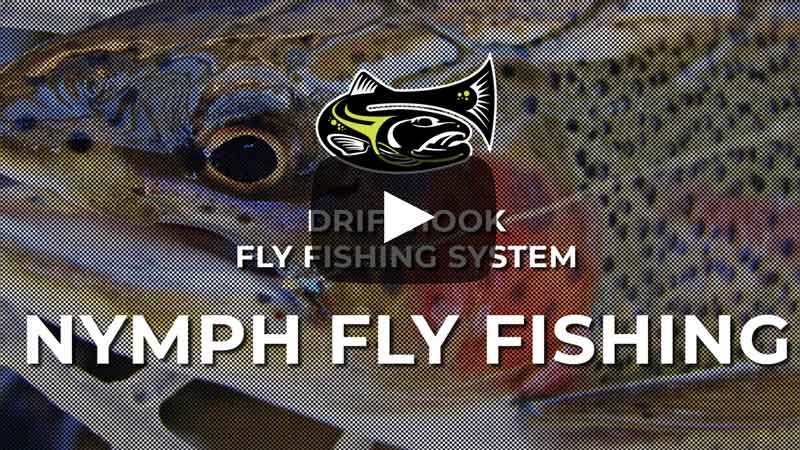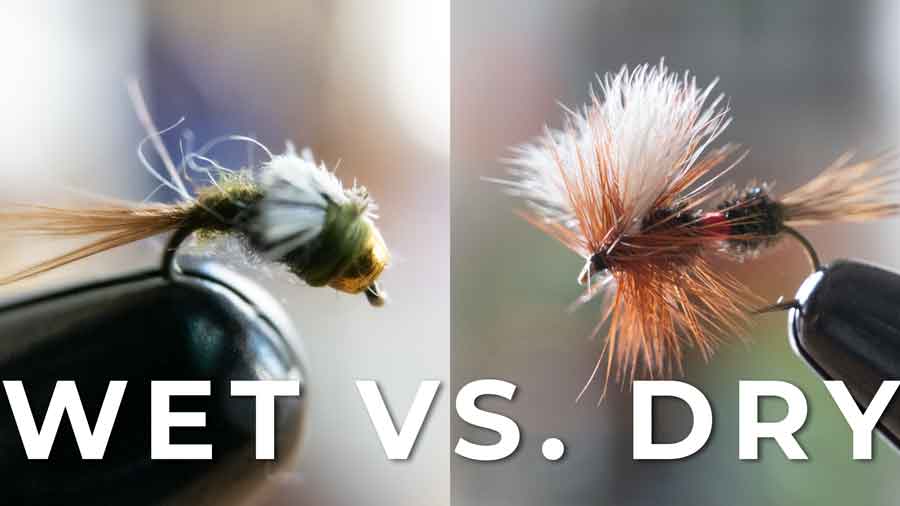Originating from Spain and France's competitive fly fishing scenes, Perdigon nymphs have transformed how anglers approach nymph fishing, particularly in fast-moving waters. Their unique design, characterized by a sleek, streamlined body, allows them to sink rapidly, ensuring they reach the fish's strike zone efficiently and stay there despite turbulent currents.

The development of Perdigon nymphs marked a significant shift in fly fishing, providing a solution to the common challenge of getting flies to sink quickly and maintain their depth. These nymphs are not just another fly in the angler's box; they are meticulously crafted tools designed to enhance fishing success.
This guide will delve into the rich history of Perdigon nymphs, exploring their origins and how they came to prominence. We will also cover the essential materials needed to tie these nymphs, providing detailed instructions on the tying process.

Additionally, we will examine various Perdigon nymph variations and their specific applications, ensuring you have the knowledge to adapt to different fishing conditions. Finally, we will discuss effective fishing techniques, particularly focusing on Euro Nymphing, to help you maximize your catch rate with Perdigon nymphs.
Whether you are a seasoned angler or a novice, this guide will equip you with the skills and knowledge to make the most of this innovative fly fishing technique.
What is a Perdigon Nymph?
If you’re new to fly fishing, you might not be familiar with the term "Perdigon nymph." The Perdigon nymph is a type of artificial fly used in fly fishing, specifically designed for nymph fishing. Nymph fishing involves using lures that mimic the larval stage of aquatic insects, which are a primary food source for many fish species, particularly trout.

Characteristics of Perdigon Nymphs
Perdigon nymphs are distinct from other types of nymphs due to their streamlined design and unique purpose. Here are the key characteristics that set them apart:
- Streamlined Body: Perdigon nymphs have a slim and smooth body, usually coated with UV resin. This streamlined shape allows them to sink quickly through the water column and reach the bottom where fish often feed.
- Weight: They often feature a tungsten bead at the head, which adds significant weight to the fly, further aiding in rapid descent. Tungsten is denser than other materials like brass, making it more effective for getting the nymph down quickly.
- Durability: The UV resin coating not only gives the nymph a shiny appearance but also makes it highly durable and able to withstand repeated strikes and rough conditions underwater.
- Simplicity: Unlike some other nymphs, which might have legs or other appendages to mimic the natural movement of insects, Perdigon nymphs are minimalists. Their simplicity is key to their effectiveness in fast water, where fish have little time to scrutinize their prey.

Differences from Other Fly Fishing Flies
- Sinking Speed: One of the main advantages of Perdigon nymphs is their ability to sink quickly. Traditional nymphs might take longer to reach the desired depth, especially in fast currents. The Perdigon’s streamlined body and heavy tungsten bead enable it to cut through the water swiftly.
- Presentation: When using Perdigon nymphs, anglers often employ a technique called Euro Nymphing. This method involves a long rod and a tight line to keep the nymph naturally close to the riverbed. Other nymphing techniques, such as using indicators, rely on floating line setups that can be less precise in fast currents.
- Durability and Longevity: Due to their delicate parts, traditional nymphs with more intricate designs might wear out faster. The resin-coated Perdigon nymphs are built to last, making them a reliable choice for anglers who fish frequently or in rugged conditions.
- Versatility: While other nymphs are often designed to imitate specific insects, Perdigon nymphs have a more generic appearance. This makes them versatile and effective in various water conditions and against different fish species. Their general attractor style can mimic a wide range of aquatic larvae.

History of the Perdigon Nymphs
Perdigon nymphs, a modern innovation in fly fishing, have revolutionized nymph fishing. Their development can be traced back to competitive fly fishing in Spain and France. These flies were specifically designed for fast-water conditions prevalent in European rivers. Their sleek, streamlined bodies ensure they sink quickly, reaching the strike zone faster and maintaining their position even in turbulent currents.
In "The History of Fly Fishing in Fifty Flies," Ian Whitelaw mentions how Perdigon nymphs were a game-changer in the world of competitive fly fishing. Their efficiency and effectiveness led to their widespread adoption among anglers looking to maximize their catch rates in various water conditions.
Materials Needed for Perdigon Nymph

Creating an effective Perdigon nymph starts with the right materials. Here’s a list of what you need for tying a basic Pheasant Tail Perdigon Nymph:
- Hook: Barbless jig hook, size 14-18
- Thread: Black or brown, 8/0 or 6/0
- Tail: Coq de Leon fibers
- Body: Pheasant tail fibers
- Ribbing: Fine gold or copper wire
- Coating: UV resin (thin)
- Bead: Tungsten bead, silver or gold, size to match hook
- UV light: For curing the resin
These materials are chosen for their durability and ability to create a nymph that sinks quickly and has an attractive profile to fish.
How to Tie Perdigon Nymphs
Tying Perdigon nymphs can initially seem daunting, but with practice, it becomes a straightforward process. Here’s a summary based on a detailed instructional video by a fly tying expert:
- Start the Thread: Secure your hook in the vise and start the thread behind the hook eye. Wrap a smooth base down to the bend of the hook.
- Attach the Tail: Tie in a few Coq de Leon fibers at the bend of the hook. These should be about the length of the hook shank.
- Create the Body: Tie in the pheasant tail fibers and wrap them forward to create a tapered body. Secure the fibers with a few thread wraps.
- Ribbing: Tie in the fine wire at the base of the tail and wrap it evenly forward to create segmented ribbing.
- Add the Bead: Slide the tungsten bead up to the hook eye.
- Coating: Apply a thin coat of UV resin over the body and cure it with a UV light. This step ensures durability and adds a glossy finish, enhancing the nymph’s attractiveness.
For a more detailed step-by-step process, refer to this video tutorial.
Perdigon Nymph Variations

Perdigon nymphs come in various styles, each designed to mimic different aquatic insects and conditions. Here are three popular variations:
- Perdigon Pearl: Known for its iridescent body, the Perdigon Pearl uses pearl tinsel for the body, creating a flashy appearance that’s especially effective in clear waters.
- Perdigon Purple: This variation incorporates purple thread or dubbing, making it stand out in murky waters with low visibility.
- Perdigon Black: With its subdued color, the black variant is ideal for imitating dark nymphs and works well in low-light conditions.
Each of these variations can be tied using the basic Perdigon technique but with slight modifications to the materials used.
How to Fish a Perdigon Nymph
Fishing a Perdigon nymph typically involves Euro Nymphing techniques, a highly effective method for catching trout in fast-flowing streams. Here are some general tips on Euro Nymphing:
- Use a Long Rod: Euro Nymphing often requires a 10-11 foot rod to keep the line off the water and achieve a drag-free drift.
- Thin Line: Use a thin, level line to minimize drag and improve sensitivity.
- Short, Tight Line: Keep the line tight and the rod tip high to detect subtle strikes. This technique allows the nymph to drift naturally along the bottom.
- Adjust Weight: You can modify the weight of your nymph by using different sizes of tungsten beads to match the water depth and current speed.
- Cover Water Efficiently: Work upstream and cover water methodically, ensuring your nymph passes through likely fish-holding spots.
Perdigon nymphs are designed to sink quickly, making them perfect for this method. Their slim profile and weighted design help them get down to the fish’s level rapidly, increasing your chances of success.
Perdigon nymphs have become a staple in modern fly fishing due to their effectiveness and versatility. By understanding their history, mastering the tying techniques, and knowing how to fish them properly, you can enhance your fly fishing experience and increase your catch rate. Whether you’re a seasoned angler or a beginner, incorporating Perdigon nymphs into your fly box is a wise choice.

![Absolute Guide to the Perdigon Nymph [Tie, Fish, Catch]](http://drifthook.com/cdn/shop/articles/GUIDE-TO-THE-PERDIGON-NYMPH.jpg?v=1716931683&width=1500)



![Ultimate Pheasant Tail Nymph Guide [Tie, Fish, Catch]](http://drifthook.com/cdn/shop/articles/Ultimate-Pheasant-Tail-Nymph-Guide.jpg?v=1717080188&width=800)
